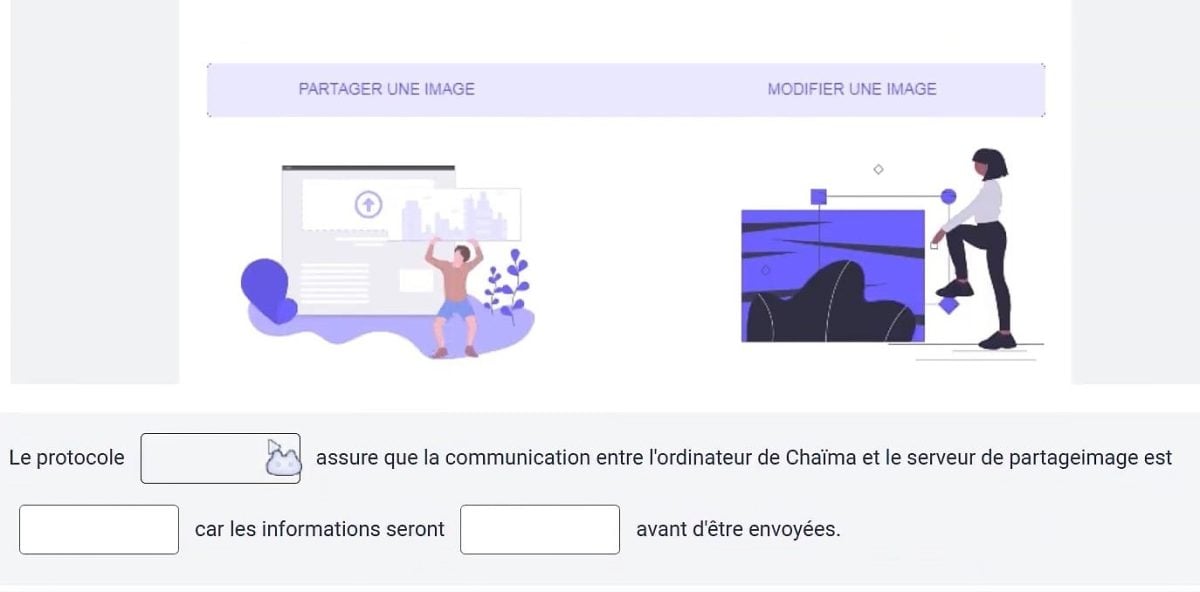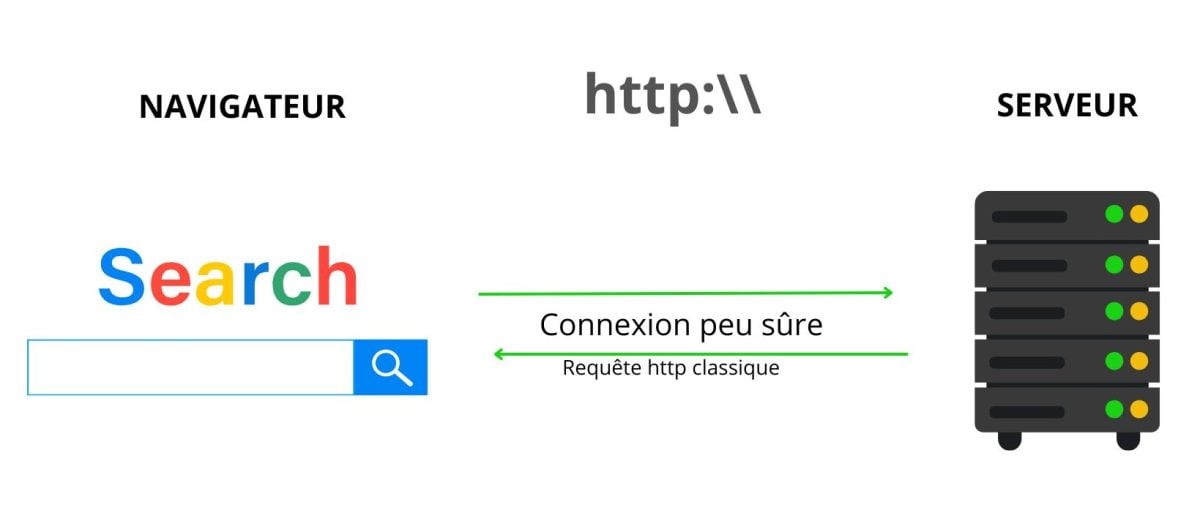The exercise Pix presented here belongs to the Protection and security: Securing the digital environment ". The aim is to identify best practices for secure navigation of Chaïma. Find out in this article.
You can also consult all our solutions to the various Pix tests by clicking on this link.
Complete the text: "Chaïma logged on to her favorite image-sharing site..." [Discover the answer]
Here's what the statement looks like as displayed on Pix:

States : Chaïma s’est connectée sur son site préféré de partage d’images et obtient l’affichage ci-dessous. Complétez le texte.
What is the HTTPS protocol?
HTTPS means HyperText Transfer Protocol Secure. This system ensures that the communication between your computer and the website you are visiting is secure.
When you log on, the HTTPS protocol comes into play to protect the information you share online. It ensures that no one can see or steal your passwords or contact details.

Thanks to HTTPS :
- The data are protected.
- The connection is authenticated.
- The trust is reinforced.
To find out if a site uses this protocol, simply take a look at the address bar of your browser.
What's the difference between HTTP and HTTPS?
HTTP and HTTPS are two protocols used to surf the web. Their main difference lies in the exchange security.

HTTP transmits unencrypted dataThis makes them vulnerable to interception by malicious third parties. In contrast, HTTPS uses a SSL/TLS encryption to protect information exchanged between the user and the website.
HTTPS is a secure version of HTTP.
How does the HTTP protocol work?
HTTP operates according to a request/response.

- L’utilisateur sends a request. When you enter a URL, the browser sends an HTTP request to the server. It can request a page, an image, a file, etc.
- the server responds. It returns an HTTP response with a status code (e.g. 200 OK, 404 Not Found) and the requested content (HTML, image, etc.).
- the browser displays content.
HTTP is a stateless protocol. Each exchange is independent. Cookies are used to keep sessions open.
How does the HTTPS protocol work?
HTTPS works like HTTP, but with an extra layer of security. It encrypts exchanges between browser and server using a protocol called SSL/TLS.

- L’utilisateur envoie une secure request.
- TLS negotiation (handshake). Le navigateur et le serveur échangent des informations pour vérifier l’authenticité du serveur (via un certificat SSL/TLS), pour choisir un algorithme de chiffrement et pour générer une clé de session secrète partagée uniquement entre eux.
- Secure connection established. Once encryption is in place, the browser sends the HTTPS request, but the data is now encrypted.
- the server responds. Only the browser can decrypt the encrypted response.
- the browser displays content (secure display).
Here's a table summarizing the differences between HTTP and HTTPS.
| Criteria | HTTP | HTTPS |
|---|---|---|
| Full name | HyperText Transfer Protocol | HyperText Transfer Protocol Secure |
| Data security | Low : Unencrypted data exposed to interception |
Strong: Data encrypted via SSL/TLS |
| Protection against attacks | No protection against attacks | Encryption to prevent unauthorized access to data |
| Site authority and identity | Unverified | Valid SSL/TLS certificate |
| Confiance de l’utilisateur | Weak | High |
| Certificate required | None | Yes, SSL/TLS certificate required |
| Indicator in browser | Pas de cadenas, souvent signalé comme “Non sécurisé” | Cadenas visible dans la barre d’adresse |
| Performance | Slightly faster | Slightly expensive encryption, but optimized for HTTP/2 |
| Recommended use | Simple sites, no collection of sensitive data | All sites |
| Regulatory compliance | No conformity | Complies with security standards and data protection laws |
| SEO impact | Negative | Positive (HTTPS favored by Google) |
What is Pix?
Thanks to its interactive exercises, Pix permet à chacun de tester et d’améliorer ses digital skills. La plateforme s’adresse à tout type de public : adolescents et adultes, en formation ou en activité.
It offers questions adapted to all levels, in a variety of fields. As you progress at your own pace, you'll discover what you're good at and what you need to reinforce. And when you feel you're ready, you can even take a test to get a better idea of what you're learning. official, recognized certification.
To conclude, the HTTPS protocol permet de protéger vos données personnelles grâce au chiffrement et à l’authenticité du site. Dans l’exercice Pix, Chaïma s’est connectée à son site préféré de partage d’images en HTTPS.
Pour aller plus loin, découvrez aussi d’autres exercices Pix :






